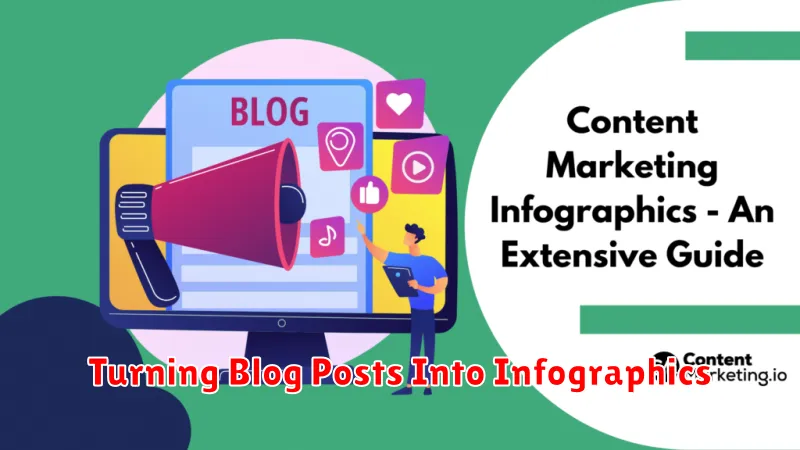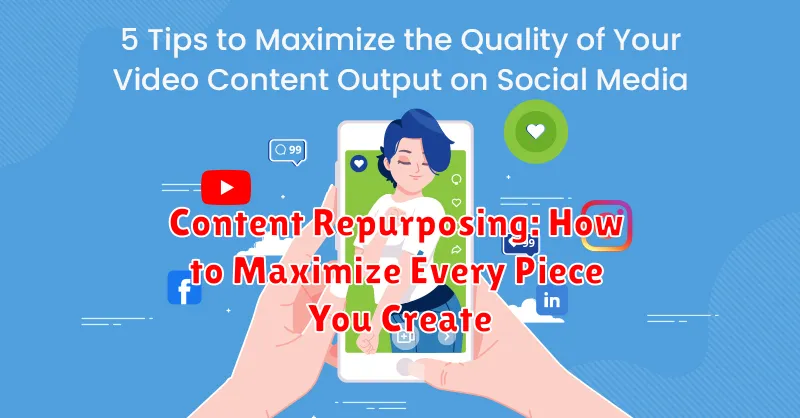In today’s digital landscape, content creation is paramount to establishing a robust online presence. However, simply generating a constant stream of new content can be resource-intensive and time-consuming. That’s where content repurposing comes in. This invaluable strategy allows you to maximize the reach and impact of every piece you create, effectively stretching your content budget and amplifying your message across multiple platforms.
Content repurposing involves transforming existing content into new formats, thereby reaching a wider audience and reinforcing key messages. Whether it’s a blog post turned into an infographic, a webinar converted into a series of social media posts, or a podcast episode transcribed into a blog article, the possibilities are endless. By strategically repurposing your content, you can not only save time and resources, but also enhance SEO, establish thought leadership, and bolster your brand’s online visibility. This article will delve into the practical strategies and benefits of effective content repurposing, providing you with the knowledge and tools to get the most out of every piece you create.
Turning Blog Posts Into Infographics

Infographics offer a visually appealing way to present information, making complex data more digestible. Repurposing your blog posts into this format can significantly expand their reach and impact.
Begin by identifying blog posts with data-rich content or step-by-step processes. These lend themselves well to visual representation. Then, extract the key takeaways and data points.
Consider the type of infographic that best suits your content. Comparison charts work well for contrasting ideas, while flowcharts are effective for explaining processes. List-based infographics are ideal for presenting key findings or tips.
Use a design tool or hire a graphic designer to create a visually compelling infographic. Ensure the design is clean, uncluttered, and easy to understand. Maintain a consistent brand identity by using your brand colors and fonts.
Transforming Articles Into Videos or Reels
Repurposing written content into video format offers a dynamic way to reach a broader audience. Videos and short-form reels are highly engaging and easily shareable across various platforms. This section outlines key steps to effectively transform your articles.
Begin by identifying the core message of your article. What are the key takeaways you want viewers to grasp? Once identified, structure a video script around these points, using concise and impactful language.
Consider incorporating visuals to enhance viewer engagement. B-roll footage, stock videos, animations, or screen recordings can illustrate your points and maintain audience interest. Ensure the visuals complement the narration and don’t distract from the core message.
Audio quality is crucial for a successful video. Use a clear microphone to record your narration. Background music can enhance the viewing experience, but ensure it doesn’t overpower the voiceover.
Finally, optimize for each platform. Reels require shorter, more impactful content compared to longer-form YouTube videos. Adapt the length and style of your video to suit the specific platform you’re targeting.
Creating Social Snippets From Long-Form Content

One effective way to repurpose long-form content is by creating social media snippets. These bite-sized pieces of information draw attention and encourage engagement, driving traffic back to the original content.
Start by identifying key takeaways and compelling statistics within your long-form piece. These highlights make excellent social snippets.
Quotes from the content can also be highly effective, especially if they are thought-provoking or controversial. Remember to attribute the quote appropriately.
Consider creating different snippets for different platforms. A tweet, for example, will need to be much shorter than a LinkedIn post. Tailor your message to fit the platform’s character limits and audience expectations.
Finally, always include a call to action in your social snippets. Encourage users to click through to read the full article, watch the video, or listen to the podcast.
Bundling Content Into Ebooks
Ebooks offer a fantastic way to repurpose your existing content into a lead magnet, a product for sale, or a valuable resource for your audience. By bundling related blog posts, articles, or even social media updates, you can create a comprehensive and cohesive resource that provides significant value.
Consider what content you have that addresses a particular topic or theme. This could be a series of blog posts about a specific skill, a collection of articles on a particular industry trend, or even a curated set of social media posts offering tips and advice. Organize this content logically, ensuring a natural flow and progression of information.
Adding value to the ebook is crucial. Don’t simply copy and paste existing content. Instead, revise and expand upon it. Include new insights, updated information, and perhaps even case studies or examples to make the ebook even more compelling.
Once compiled, ensure the ebook is professionally formatted and edited for a polished presentation. A well-designed ebook reflects positively on your brand and enhances the perceived value of the content.
Sharing on Different Platforms with Format Adjustments
Repurposing content isn’t simply copying and pasting. Each platform has its own nuances and preferred formats. Adjusting your content accordingly is crucial for maximizing its impact and reaching a wider audience.
Consider these platform-specific adjustments:
- Social Media: Keep it concise and engaging. Use visuals, short videos, and relevant hashtags.
- Blog Posts: Dive deeper into the topic with long-form content, incorporating headings, subheadings, and bullet points for readability.
- Email Newsletters: Provide valuable information and calls to action. Maintain a professional tone and format.
- Infographics: Transform data and complex information into visually appealing and easily digestible graphics.
By understanding the strengths of each platform and tailoring your content accordingly, you can ensure maximum engagement and reach.
Reposting with Updated Data or Visuals
One effective repurposing strategy involves updating existing content with fresh data or new visuals. This is particularly relevant for evergreen content that remains valuable over time, but may require periodic refreshing to maintain accuracy and engagement.
For data-driven pieces, consider updating statistics, charts, and graphs with the latest figures. This demonstrates your commitment to providing current information and reinforces your authority on the subject. Updating data not only improves the accuracy of your content but also provides a strong justification for re-promotion across your channels.
Similarly, refreshing the visuals accompanying your content can significantly enhance its appeal. Replacing outdated images with higher quality alternatives, or creating new graphics that better reflect current trends, can breathe new life into older posts. Consider adding video content, or updating existing videos with new intro and outro sequences.
Tracking Performance Across Formats
After repurposing your content, consistent tracking is crucial to understanding what resonates with your audience across different platforms. This involves monitoring key performance indicators (KPIs) specific to each format.
For written content like blog posts and articles, track metrics such as page views, time on page, and social shares. Video content requires attention to metrics like view count, watch time, and audience retention. With audio content like podcasts, downloads, listens, and listener demographics are key indicators of success.
Social media metrics will vary depending on the platform, but generally include engagement (likes, comments, shares), reach, and follower growth. By analyzing these KPIs across different formats, you can identify which repurposed content performs best and optimize your strategy accordingly.

